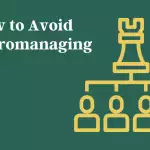Ergonomic hazards are physical factors that put our musculoskeletal system at risk of injury. Our musculoskeletal system is the body’s system of locomotion, including joints and muscles and tendons and ligaments and bones.
Working from home can sometimes pose a threat to this system. But the good news is that these threats can be identified and avoided.
Here are eight work-from-home ergonomic hazards to avoid:
1. Bad Posture
One of the good things about working from home is that we seldom move about. And if we do, the movements seem to be limited to just walking, pacing, etc. It’s our home, so we just sit still or lie or maybe even stand from time to time.
For this reason, posture is so important when we work from home. A good posture keeps your spine healthy and does not put any strain on your muscles. It helps you feel at ease and can even improve sleep.
But a bad one? A bad posture can be a nightmare.
Posture is considered bad when our spines are positioned unnaturally so that it curves too much. Our spines are the vertebral bones running from the neck to the lower back, and they help with almost every kind of movement involving the trunk.
Bad sitting posture can affect the neck muscles, causing what is described as tension neck syndrome. This presents a dull pain in the neck and around the head that could grow worse over time.
Bad standing posture can cause you to become a sloucher. It can cause your shoulders to be shaped awkwardly and may even cause a potbelly.
Bad lying posture presents similar effects, the most prominent being a dull ache in the back and maybe even headaches from neck strain.
Working from home? Try as much as you can to keep your spine in a healthy posture. Stand erect, and try not to slouch.
When you sit, sit with your legs flat on the ground and your back straight. Do not bend your neck this way or that way, and do not angle your lower back as if half-sitting.
Your knees should not drop far lower than your thighs, and your ankles shouldn’t be buckled into each other.
If you are already showing signs and symptoms of bad posture, begin to practice some posture-correcting exercises. These exercises can relieve the effects of bad posture.
2. Heat or Cold
Sometimes, even when we work from home, we can be exposed to extreme temperatures. This is especially if we do work that involves catering and the like.
If you are a baker, for example, who works from home, it is safe to assume that you come in contact with the oven regularly and also that you may have to pull out really cold stuff from your refrigerator.
Avoid extreme heat. You should already know this, but heat is quite bad for you. It could cause burns ranging from first to third-degree burns and present symptoms that may or not include impaired movements.
For males, exposing your groin area to heat can have a bad effect on your testicles. Your testicles function optimally at a lower temperature than the rest of your body. So, try to stay away from heated areas.
Do not use fires around inflammable areas.
Coldness, too, can be just as hazardous as heat. Coldness can make your skin numb and produce several symptoms that are generally described as frostbite.
Do not keep the AC too long if you feel too cold. Your skin should not be in contact with the AC. If your workstation is too close to the vent, you should think about removing it.
3. Repeated Awkward Movements
This is similar to bad posture, but it’s different in that you don’t have to be static.
You have to move. Sometimes, even when we work at home, there is a need to make repeated movements.
For example, just typing and typing is a movement. And it is repetitive, just like the habit of rubbing your feet against each other in a sitting position, knocking your knees, or maybe even using your fingers to drop your writing desk or table.
Repetitive movements can pose a threat to your musculoskeletal system, and you should try as much as you can to avoid them if you can.
Do not rub your feet against each other. If you are subconsciously doing this because of the cold, then turn off the AC. If you are knocking your knees together, then stop.
No matter what you’re at, try to avoid repetitive movements because, over time, they can cause you injury and ache.
4. Lighting
Lighting can have a damaging effect on your eyes. Overly bright light can have permanently damaging effects on your retina. Just staring at the sun for a few minutes can!
Try to make sure that your workspace isn’t putting you at the risk of too-bright lighting. If you sit by the window all day, the sun’s rays sinking directly into your eyes, you should stop. Move your table somewhere else.
Computer screens are also capable of causing progressive damage to your eyes, especially if you have underlying issues with your sight. If you are photophobic, for example, exposure to bright light is going to cause you more damage.
Don’t stare at the computer for too long. And if you can’t help it, try to put on anti-glare glasses. These glasses keep the excess light from reaching your eye and, therefore, keep you safe. Use a night mode.
Avoid blue light. It has been known to affect your eyes and affect your sleep.
Also, just as too-bright lighting can affect your eyes, too-poor lighting can have the same effect.
Have you ever tried to search for an object in a dark room? If you searched for long, you might have noticed that your eyes began to ache. This is because too dull light makes the eyes focus more. And over time, we may begin to feel the effect.
Your workspace should be adequately lit. Not too bright and not too dull.
Also, being near a natural light source is better than sitting under fluorescent lights.
5. Noise
The human ear is designed to take just enough sound energy. Too much sound energy and we are at risk of damage.
Noisy environments can pose a risk to us. Noise-related hearing loss is an issue you should consider when working from home.
If you live near a factory and are exposed to high decibels (dB) for a long period of time, you should consider putting on earbuds.
You also shouldn’t blast music for long periods. Working from home means having fun while at work, right? Cool. Just don’t listen to too much loud music for long. Turn down the speakers.
You shouldn’t be exposed to sound levels above 85 dB if you’re using headphones, as it can cause possible ear damage if you listen for more than two hours. High sounds between 105 to 110 dB can cause damage within five minutes.
Don’t use earphones for too long, especially with the volume raised far above the normally accepted range. If you do, the sound level should fall under 70dB.
6. Vibrations
Vibrating surfaces may not be common in at-home workspaces, but it can still be possible that you are exposed to vibration for too long.
Know that vibration is capable of causing injury to your muscles, especially when you are exposed to it for long periods.
7. Poor Workplace Design
Working from home can be a delight because you do not have to spend so much setting up a workspace. But a workspace, no matter how cheap it is to set up, has to be safe. A poorly set up workspace can prove to be an ergonomic hazard.
When setting up your workspace, be sure that you choose an area at home with low wall projections.
If your workspace is in an awkward corner at home where you have to squeeze through walls and corridors, then it is possible that you will someday injure yourself when headed for your workspace. You could hit your feet on the ground, or maybe even your arm.
Your door should be high enough for you and should not require that you bend over too much to enter into your workspace. There’s always that possibility that you may someday forget about the too-short door and hit your head directly on the frame.
Sharp objects should not litter around your workspace. You don’t want any injuries, do you?
Your ceiling fan should be high, too.
Pets can also, in very rare cases, cause an ergonomic hazard. If your pets hang around too often in your workspace, they can knock down some objects or can cause damage to your work.
8. Poorly Ventilated Workspace
You need all the air you can get when you’re at work—and fresh air at that, so that your circulatory and respiratory systems function optimally.
A poorly ventilated workspace can pose a threat to your respiratory system, especially if the workspace is dusty. Dust can trigger a number of allergies that present symptoms ranging from mild sneezing to heavy asthmatic attacks.
Open your windows. Clean good—so good you keep the dust away.
No stuffiness. Just you, seated there and enjoying what it really is to work from home.
Final Thoughts
Working from home can be a great experience, but you have to be careful enough to avoid risks and hazards. Just be wary of these eight common work-from-home ergonomic hazards and do something about them as soon as possible.
Featured photo credit: Annie Spratt via unsplash.com














